Last week, 7-8 December, all the leaves were brown, and the sky was grey.
Storm Darragh battered any last leaves on the fruit trees away, and turned our street into an obstacle course of blown-over wheelie bins. Walthamstow’s weather was not in our favour for working the plot. We were a long way from California, Toto.
Plants & Practice is a reader-supported publication, currently free to everyone. If you’ve already subscribed - hurrah! and thank you! - a new episode should pop into your inbox each week. If not, click to enter your email here and join the allotment gang.
(Technical note: there are usually a *lot* of photos in this post, and it might not all fit on your email. Hitting the View Entire Message button at the end should sort this out, as will reading via the app or online versions of Substack.)
This week’s Plot Shot
I was glad to see that our rose arches had survived Bert and Darragh. The main avenue of the plot will need some work to straighten the arches up and push them back into the ground where the winds have lifted them. A couple are swaying like drunk party-goers on their way home after a big night out.
There’s rose pruning to do, and digging of the beds to remove the couch grass around the roses, before next year’s planting can go in.
Plot work in progress
The weekend’s work on the plot, in between Storm Darragh’s batterings, has been to make a start on winter pruning. There are four apples trees, a medlar and a quince to prune at this time of year. The apples in particular need their top growth of this year’s water shoot fingers taking off.
All these shoots are way above my head, which means either borrowing a ladder or (more likely) me standing on an up-turned bucket, to prune. We’re not completely disregarding of safety on allotments, but there is a bit of gung-ho to get jobs done. Probably best that I don’t work professionally as a health and safety manager anymore. At least I know which rules I’m breaking.
All these upright, vertical twigs are this last year’s growth. It is a good sign that the trees are growing and healthy, but blossom and fruit out of reach is pointless, so the shoots will all come off, forcing growth further back down the tree.
Harvesting now
We’ve only our candy-stripe chard to harvest, so I left it to grow. I’ll cut and come again next week. Meanwhile, not exactly a harvest, but the fastest-growing thing we have is the annual amaryllis bulb.
Every year we grow a new amaryllis in the kitchen, as a spectator sport. We regrow previous years’ bulbs too, but they often take several years to gather their energy to flower again, so we just get leaves even after resting them in the greenhouse on the allotment. This is the newbie in week two. Here comes the Saturn rocket of bulbs.
Making and eating
The lack of fresh produce meant no cooking or making with anything from the plot this week, so nothing to add to the produce tally1. There’s always a point in the season when this happens, but not normally now. Usually we are still picking kales, standard old ‘Borecole’, blistered leaves of ‘Cavolo nero’ and frilled ‘Red Russian’ in December, and nudging a few Brussels sprouts to get a move on for a festive dinner. This year? None - all the brassicas gave up, or were eaten by the slug and snail armies earlier in the year.
Instead we inventoried the preserves (sufficient to open a small shop, if not a small chain) and took stock of how the season had gone. It has been a good one for the apples and stone fruit (apricots, greengages, damsons and plums), which has produced over 20 small jars of chutneys, jellies and jams. A good haul. But it was a poor summer for soft fruit, and we’re missing the classic English summer jams - strawberry, raspberry, gooseberry and blackcurrant. In fact, nobody on the site has summer jams this year. The wet spring wiped out a lot of blossom, and there was no warmth in the summer to produce much fruit from what was left.
Community of Practice
Given the foul weather brought to the site by Storm Darragh, most sensible people would have stayed inside in the warm, battened down the proverbial hatches and consumed good quality hot chocolate. But of course, allotment folk aren’t entirely sensible people. In fact, I’d go as far as to say that the word ‘sensible’ doesn’t feature in the dictionary of allotment pratice (although we do have ‘stupid’, ‘creative’ and ‘cheapskate’, as explained in previous episodes, and ‘safety’ can have a rather casual definition).
By Sunday afternoon I was twitching to be out of the house, weather or no. Also, bare root roses in a brown paper package were giving me side-eye in protest at being kept indoors within sight of a radiator. I headed off to the plot, hoping other non-sensible people would be there.
I’d had a rush of enthusiasm a few weeks ago, and bought a bargain bundle of hedge roses which was on special offer at David Austin Roses, bagging Rosa ‘Kew Gardens’ for the gang. Not-quite-Christmas-presents all round, for the closest folks who have helped out and supported each other through 2024’s rubbish growing season. They know who they are.
Passing out the new roses, we recalled the tradition in the group of sharing surplus plants between us, so that they pop up on friends’ plots across the site. One summer, a clump of gorgeous golden marjoram went rampant, and it kept being divided and passed along. Pillows of gold puffed up from plot to plot. It worked like a family tree, a plant tell, showing which plot holders were friends with which neighbours, as the plants were passed from hand to hand. No golden marjoram? You weren’t in the gang that year.
Come the summer, there will be small hedges of apricot-to-white roses across the site, waving to each other. They won’t count towards the produce tally, but they’ll be lovely, I’m sure.
E17 Local Hero
Clearing down the autumn raspberry beds, I found that Molly the acanthus is back on the block, having made a heroic effort to grow back under the canes since the summer.
Molly, an Acanthus mollis, is the easier to manage of the two acanthus we have on the plot. (Her relative Acanthus spinosus lurks in another bed, and is spiny, grey and vicious.) She’s the one with soft, floppy green leaves, bought as a present for our wedding at the William Morris Gallery as a nod to the acanthus in Morris’s textile designs. There were some seeds left on the last dried out flower spikes. I’ll see if I can get them to germinate in the spring, and Molly’s children will get passed on to other plots.
The Weekly Fox News
There’s been a shift in fox behaviour this last week. Normal patterns of coming and going for food have been disrupted, partly by the storm but also because the year is turning and the vixens are scouting for dens across the site for their next year’s cubs.
Here’s Nellie, a shadow scuffling about in our currant and berry beds where she had a den a few years ago, looking for a way under the tarp on the old compost bin. She’ll be very welcome, and we’ll work around her and her cubs if she stays.
Until next week, here’s to warm dens for everyone.
Ang
Total this week, £0, a Eurovision null points, making total to date since Episode #5, £200.34. Fourteen weeks’ produce tally, based on current supermarket or local farmers’ market prices.

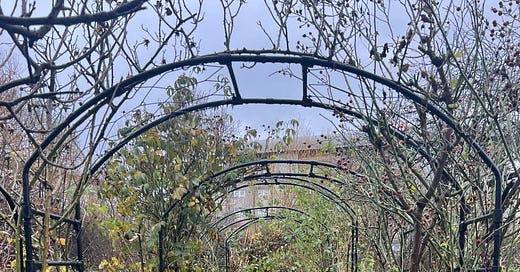



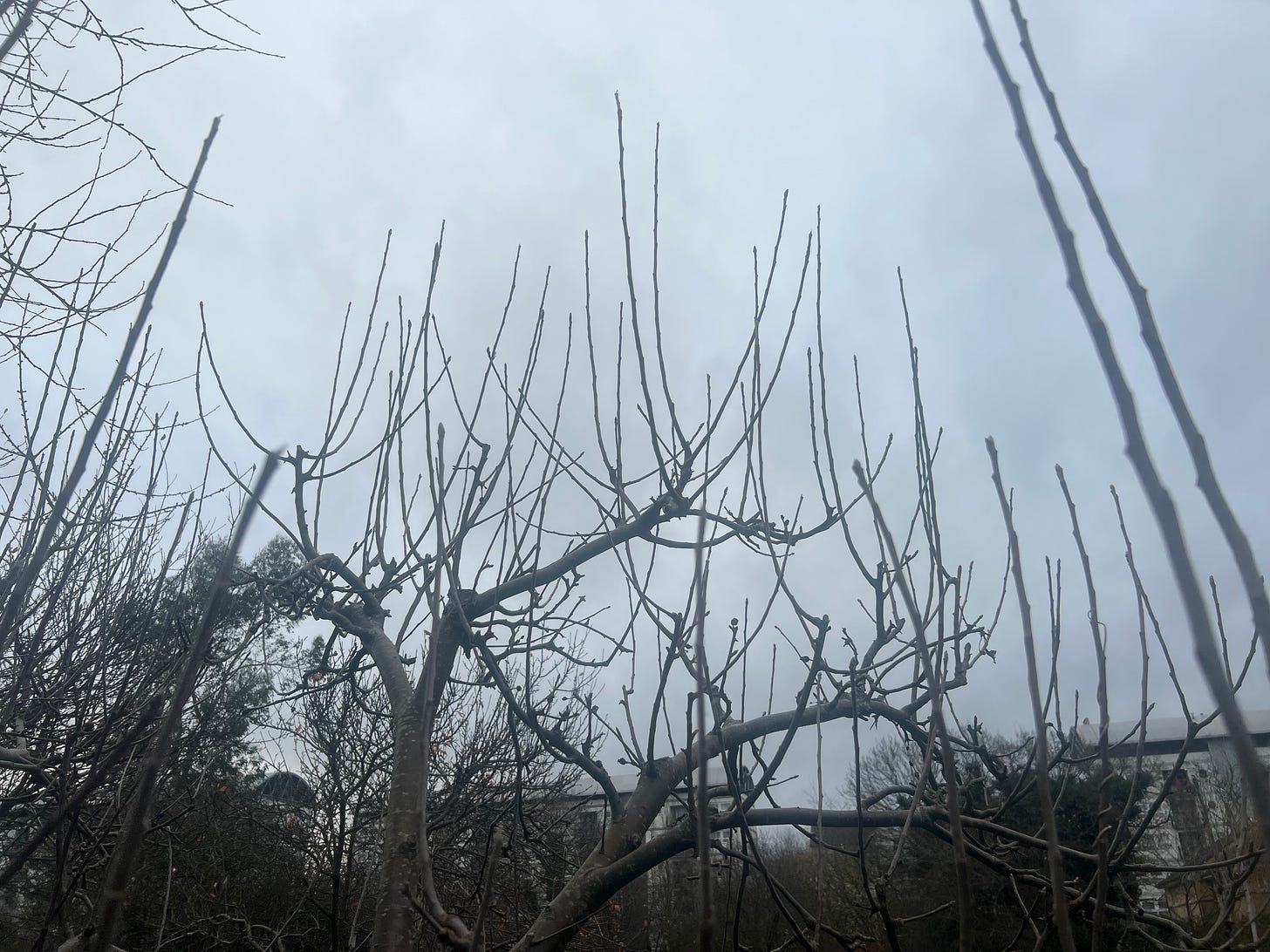
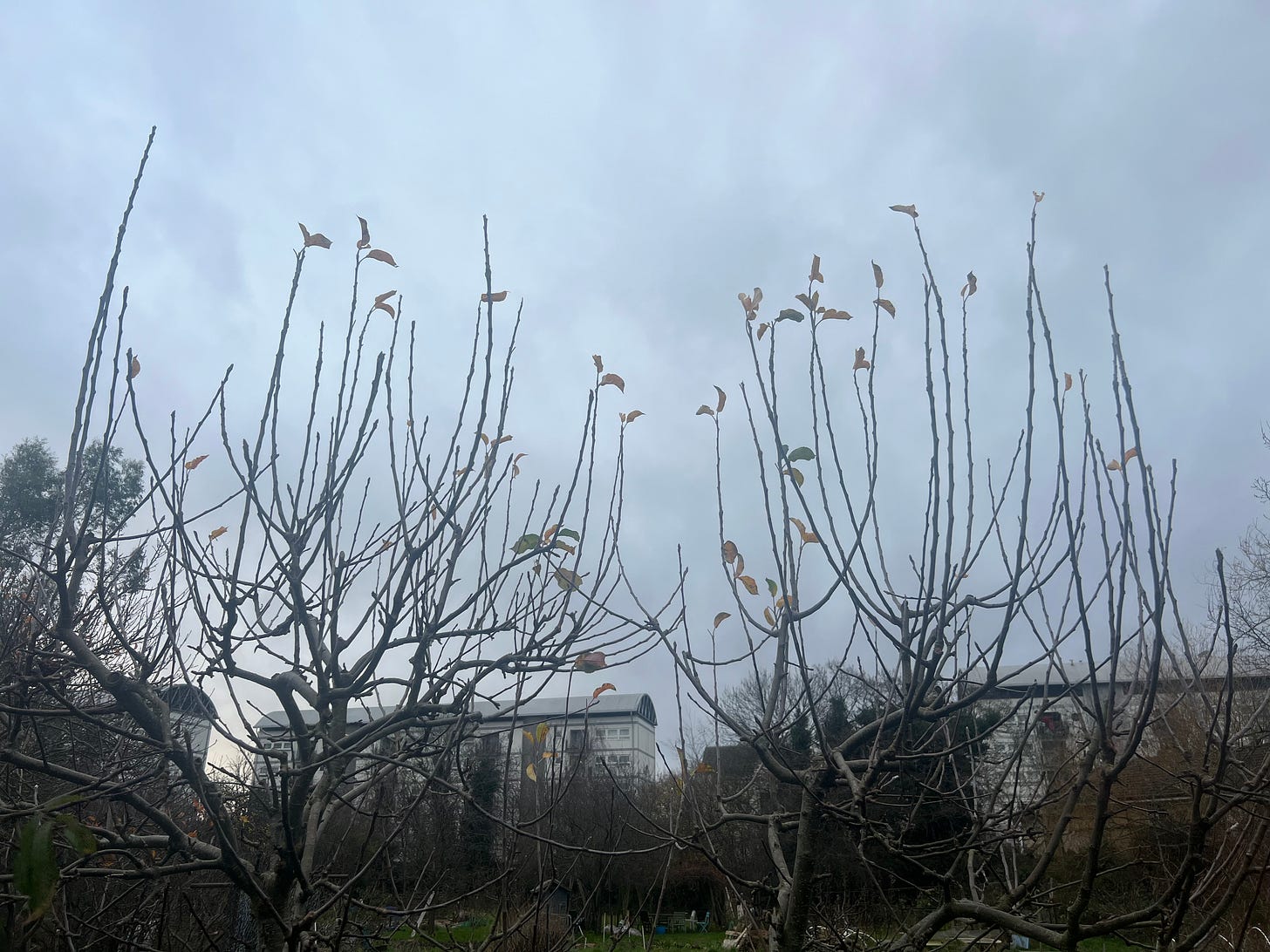
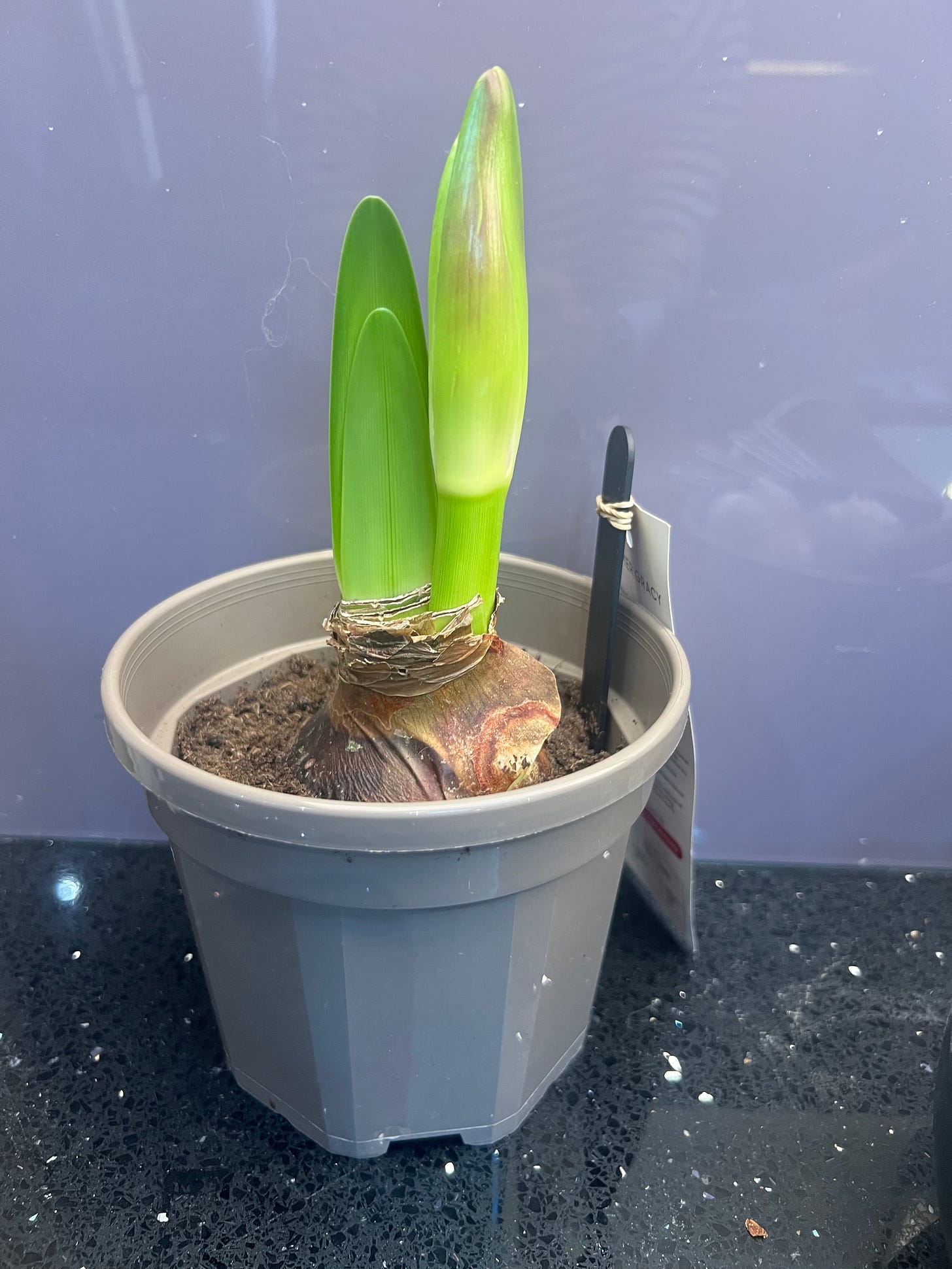
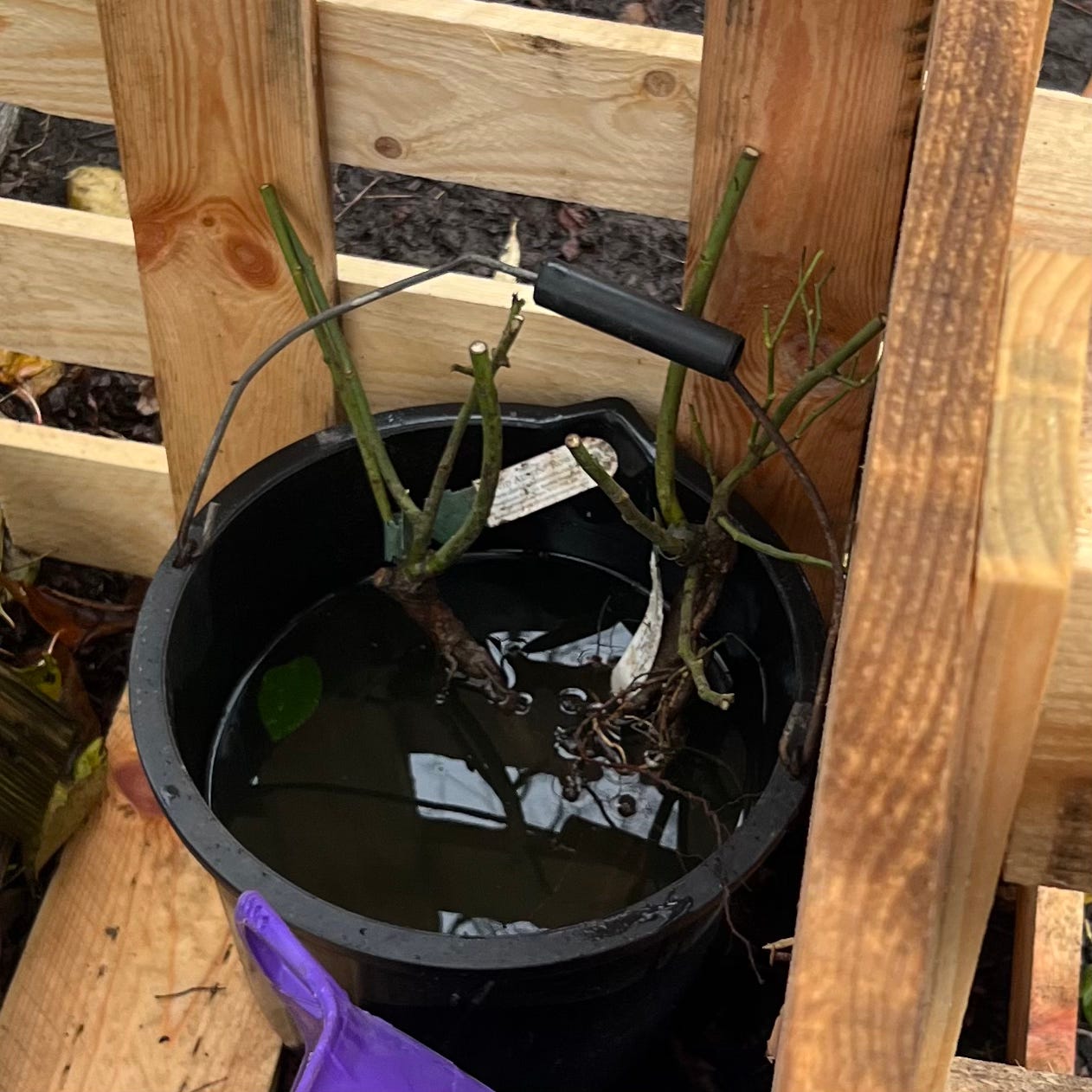
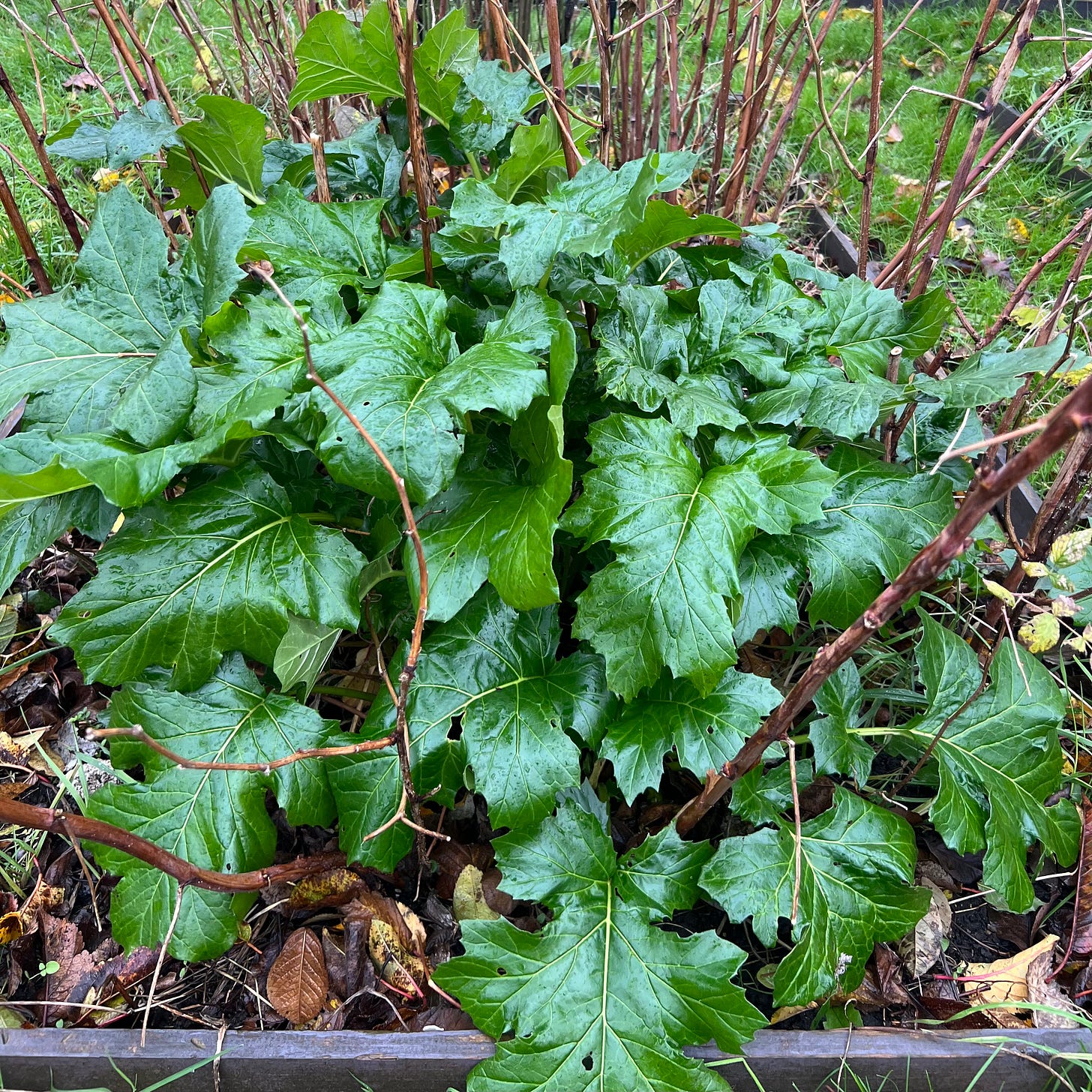

Hi Ang, love your post and I’m glad it wasn’t just me who struggled. Only one jar of redcurrant jelly this year from my measly crop. Hang in there